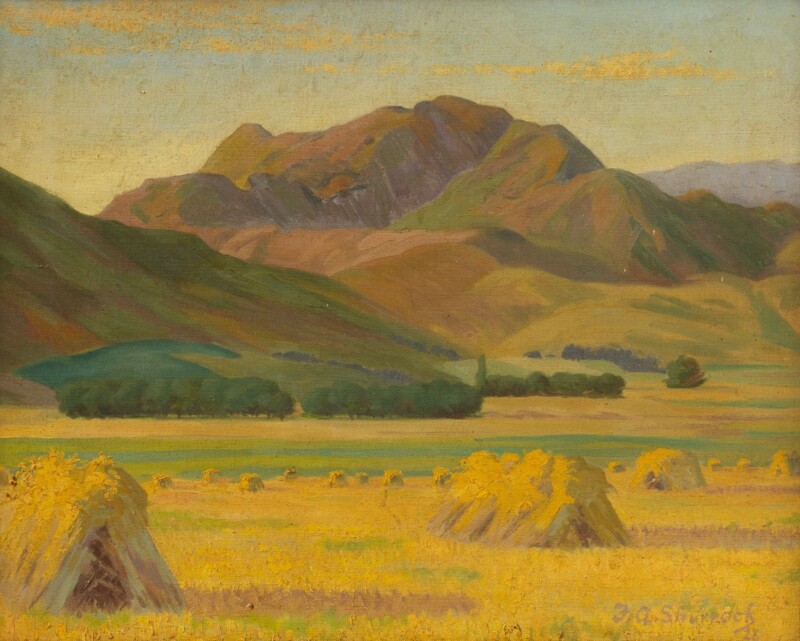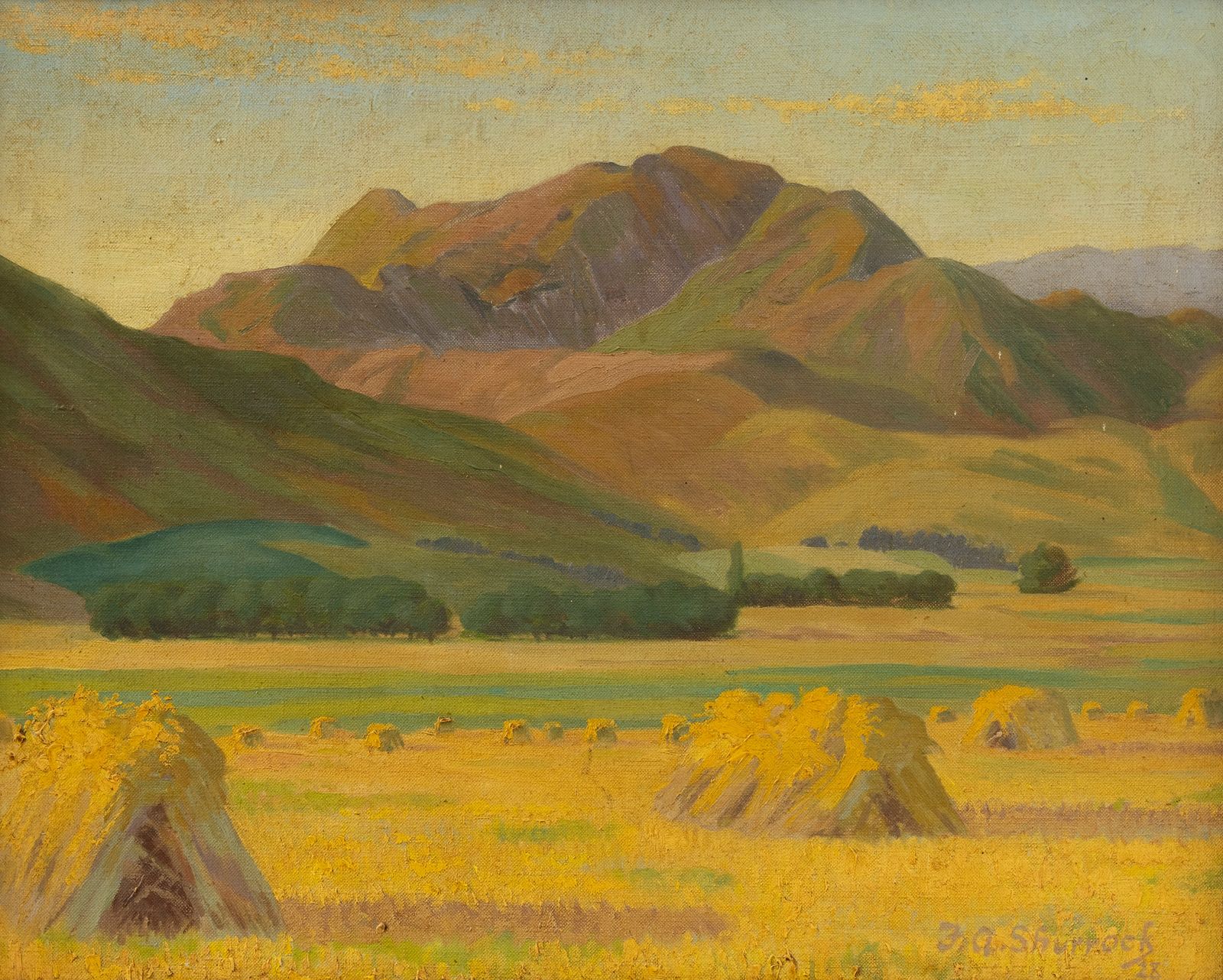SHURROCK, Francis Aubrey;
Dog Hill No. 2
1928
Oil on canvas
400 x 495mm

Francis Shurrock was born in Lancashire and raised in Cheshire, where he was a ‘pupil-teacher’ at the Chester School of Art from 1905 to 1907. In 1909, he received a scholarship to study at the Royal College of Art. While there, he assisted James Stevenson with his plans for the rebuilding of Oxford Circus and won the praise of Auguste Rodin for a sculpture of an adolescent, Peter. He graduated with a diploma in sculpture and architecture in 1913. He subsequently worked as a teacher and principal, and fought in the First World War. In 1923, partly for health reasons, Shurrock emigrated to New Zealand via the ‘La Trobe scheme’, assuming the position of ‘modelling and art crafts master’ at the Canterbury College School of Art in Ōtautahi Christchurch. He threw himself into his work as both artist and teacher, and he soon found his place among the progressive artistic set in Aotearoa, befriending fellow La Trobe teachers, like William Henry Allen and Christopher Perkins (of whom he created a sculpted bust 1933), as well as local-born artists.
Shurrock’s approach to teaching made him stand out from his peers dramatically (one student, Juliet Peter, described him as an ‘alien’). He was best-known as a sculptor, and his impact in that field was considerable. Among his best-known pupils were Jim Allen, Alison Duff, and Molly Macalister. However, was also a capable painter and printmaker, and he influenced artists working in these fields, most notably Rita Angus, Toss Woollaston, and Bill Sutton, who once commented, ‘We learned how to think from “Shurry”.’ His ideas were further promoted via articles in the widely-read magazine Art in New Zealand. Shurrock’s pictorial style is gently rather than stridently modernist. He harboured an interest in Japanese art. He and his wife owned a large collection of Japanese woodcuts, which were known to Angus and Betty Curnow, and apparently to Leo Bensemann as well (the two men were both avid folk dancers).[1] Japanese influences are visible in works by Shurrock, including the drawing Samurai Warrior (1922) and the print Nelson Landscape (c. 1928).
Moments of thin and flat painting in Dog Hill No. 2 point to the influence of Japanese art. Shurrock also uses dynamic brushwork, particularly in the foreground, where it evokes the texture and luminosity of haystacks in evening light. The work calls to mind Claude Monet, of course, the impressionistic landscapes of Sydney Lough Thompson, and more planar paintings by artists like Angus, Bensemann, Rata Lovell-Smith, and Olivia Spencer-Bower. The passage of cool, deep green that cuts through the centre of the work and separates the warm sky from the warm field, is an especially beautiful touch. Another work in the Fletcher Trust Collection, Nelson Girls’ College, painted by Shurrock’s friend William Henry Allen a little under a decade later, provides an interesting comparison point. Both works share an interest in distillation of form, and both evoke a New Zealand of plenty and natural beauty. However, Shurrock’s atmospheric, pastoral landscape contrasts with Allen’s structured, suburban vision. Shurrock’s country is a place of nostalgia and divine light; Allen’s town is a place of progress and clarity.
[1] Betty Curnow, ‘Rita Angus: Impressions by Some Friends, Art New Zealand 3 (December/January 1976–77), https://art-newzealand.com/3-angusbc/; Avenal McKinnon, ‘Leo Bensemann’, Art New Zealand 30 (Autumn 1984), https://art-newzealand.com/30-leob/.
Inscriptions
F. A. Shurrock/28 [l.r.]Provenance
2025–
Fletcher Trust Collection, purchased from International Art Centre, Tāmaki Makaurau, 24 June 2025, lot 149
–2025
Unknown

